Imagine stepping into your home and being greeted by not only the vibrant greens of thriving plants but also the fresh, invigorating air they help purify. Whether you’re just planting your first seeds or have a seasoned green thumb, integrating air-purifying plants into your living space is a simple, rewarding way to enhance both your environment and well-being. Indoor plants do more than just beautify—they work tirelessly to cleanse the air, reduce toxins, and create a healthier atmosphere for you and your loved ones.
In this article, we’ll explore a variety of plants renowned for their air-purifying prowess, each suited to different levels of care and conditions. You’ll discover how easy it is to choose the perfect plants for your home, whether you’re looking for something low-maintenance or a new leafy challenge. From the resilient Snake Plant to the lush Peace Lily, we’ll guide you through the benefits and care tips for each, empowering you to cultivate a home that’s not only aesthetically pleasing but also a haven of clean air.
Top Air-Purifying Plant Choices
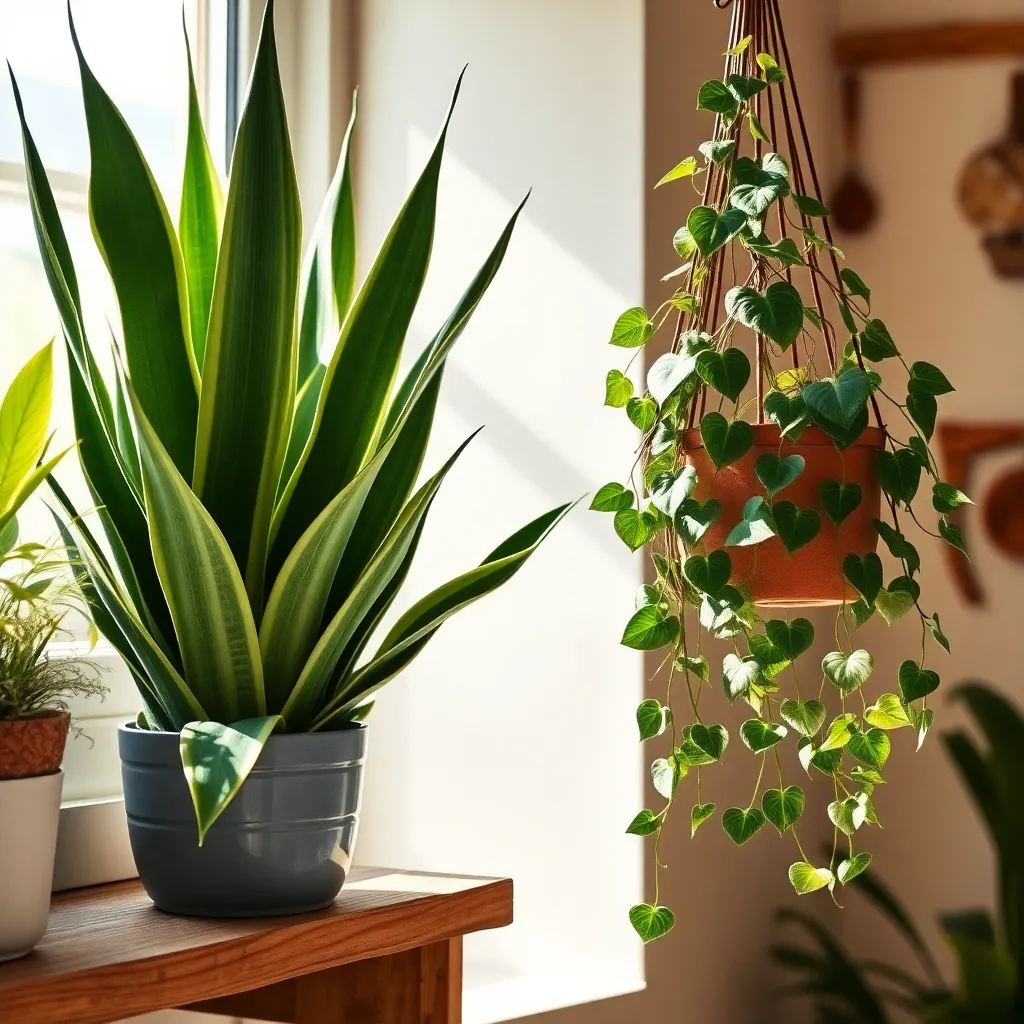
One of the top choices for air-purifying plants is the Spider Plant. Known for its resilience and low maintenance, this plant thrives best in indirect sunlight and well-draining soil, making it perfect for beginners.
Another excellent choice is the Peace Lily, which is celebrated for its ability to eliminate toxins like ammonia and formaldehyde. For optimal growth, keep the soil moist but not soggy and place it in a spot with moderate to low light.
Consider adding a Snake Plant to your collection, as it is highly effective at converting CO2 into oxygen at night. Snake Plants require very little water, so it’s crucial to let the soil dry out completely between waterings to avoid root rot.
The Boston Fern is a classic air-purifying plant that also adds a lush, decorative touch to your home. To keep it healthy, ensure you provide high humidity and regularly moist soil, and consider misting the leaves to maintain adequate moisture levels.
Benefits of Indoor Air Purifiers
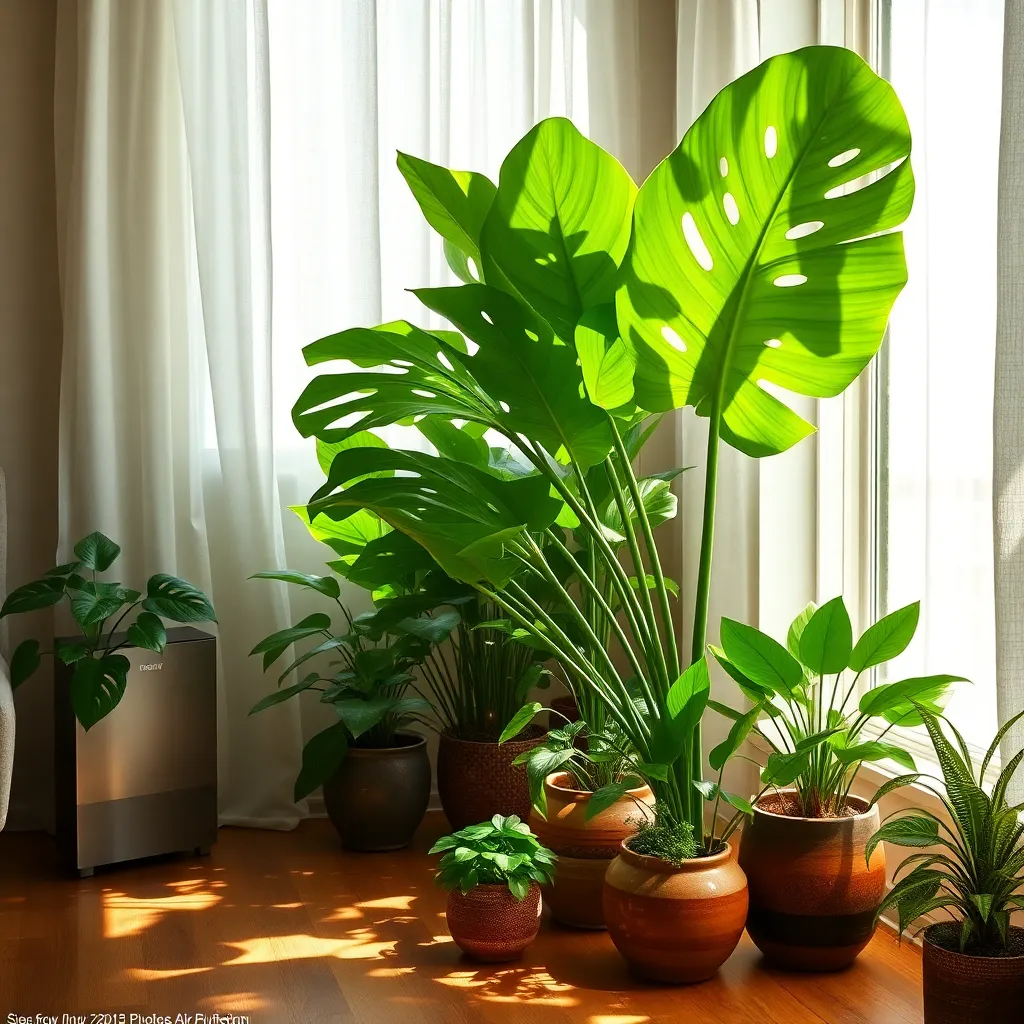
Indoor air purifiers offer numerous benefits that complement the natural purification capabilities of plants. They can significantly reduce airborne particles and pollutants that plants alone might not completely eliminate, providing a healthier living environment.
One advantage of having an air purifier is its ability to work continuously, even when your plants might need a period of dormancy or reduced activity. While plants like the peace lily and spider plant are effective, air purifiers can target specific impurities, such as volatile organic compounds (VOCs) and allergens, with consistent results.
For best results, consider combining the use of air purifiers with your air-purifying plants. This combination can maximize the removal of toxins like formaldehyde and benzene, which are often present in indoor spaces due to household products and building materials.
When selecting an air purifier, opt for models with HEPA filters that can capture a high percentage of fine particles. To complement this, ensure your plants are thriving by providing them with ideal conditions—such as using a well-draining potting mix and maintaining appropriate humidity levels for specific plant types.
Ideal Placement for Maximum Effect
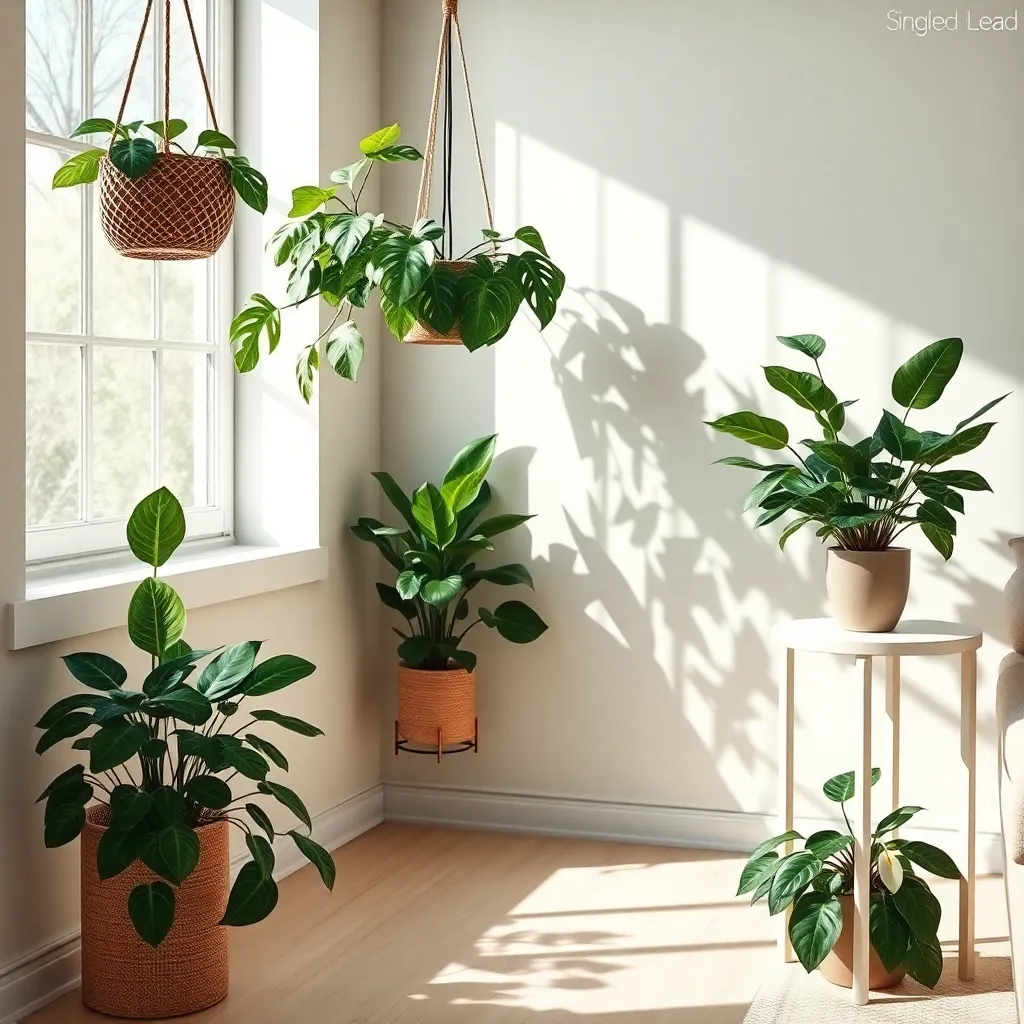
Strategically placing air-purifying plants can significantly enhance their effectiveness in cleaning indoor air. For instance, placing a plant like the pothos near a window ensures it receives enough indirect light, which is essential for its growth and air-purifying capabilities.
In areas like the kitchen or bathroom, where air quality can be compromised, consider placing a peace lily. This plant thrives in low-light conditions and can effectively remove toxins such as ammonia and formaldehyde from the air.
Bedroom corners are ideal for a snake plant, known for its ability to convert CO2 into oxygen at night. Ensure it is placed in a well-draining potting mix and water it sparingly, allowing the soil to dry out between waterings.
For larger rooms, a rubber plant can make a striking statement while purifying the air. Position it in medium to bright indirect light, and use a peat-based soil to maintain moisture while ensuring good drainage.
Caring for Your Green Cleaners
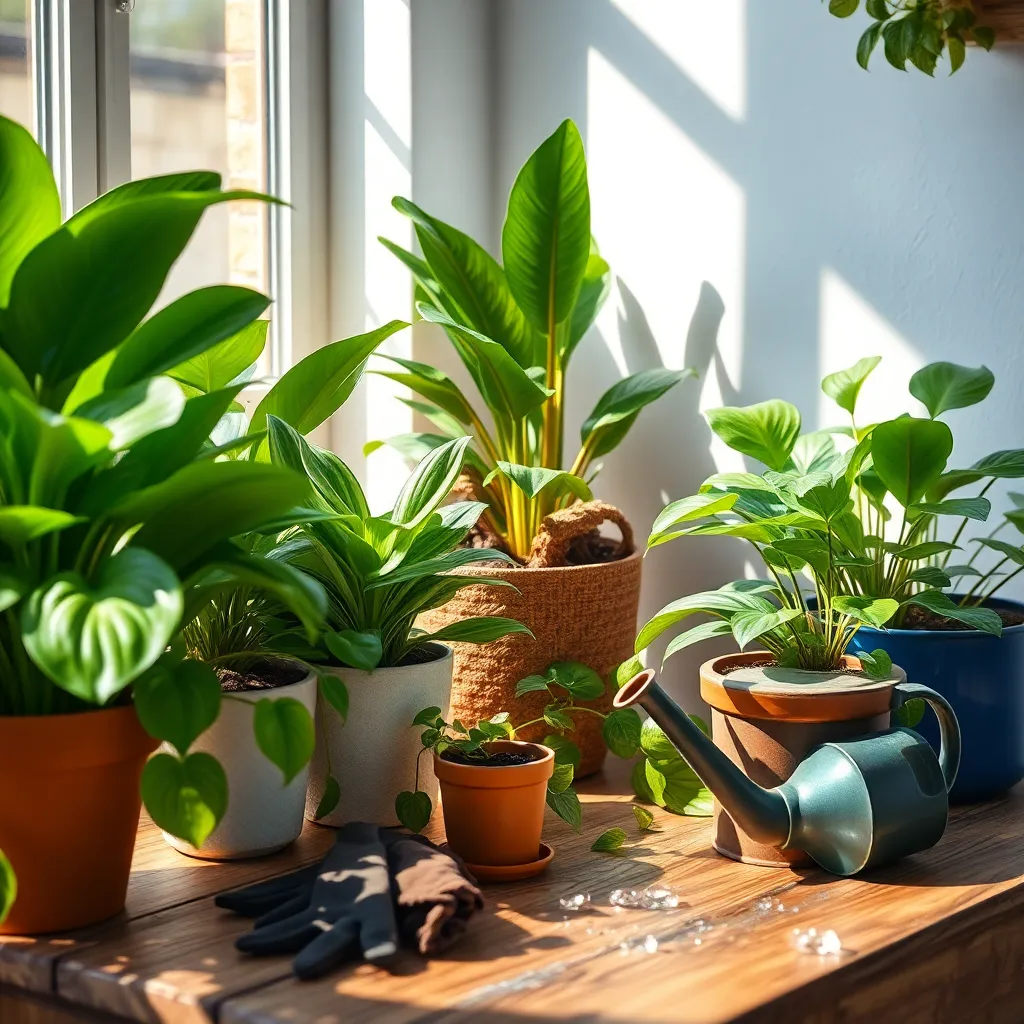
When caring for air-purifying plants, it’s crucial to tailor your approach to each plant’s specific needs. Start by understanding the watering requirements; most air-purifying plants, like the snake plant, prefer to dry out between waterings, needing water only every 2-3 weeks.
Light conditions also play a vital role in plant health, impacting their ability to purify air effectively. While plants like pothos thrive in low-light conditions, others such as the peace lily need bright, indirect light to flourish.
Soil selection is another key aspect of plant care, directly affecting growth and air purification capabilities. Opt for a well-draining potting mix for most indoor plants, such as a blend of peat moss, vermiculite, and perlite, to prevent root rot.
Regular maintenance ensures that your green cleaners remain efficient and vibrant. Trim dead or yellowing leaves with clean scissors to promote new growth and boost the plant’s air-purifying performance.
Troubleshooting Common Plant Issues
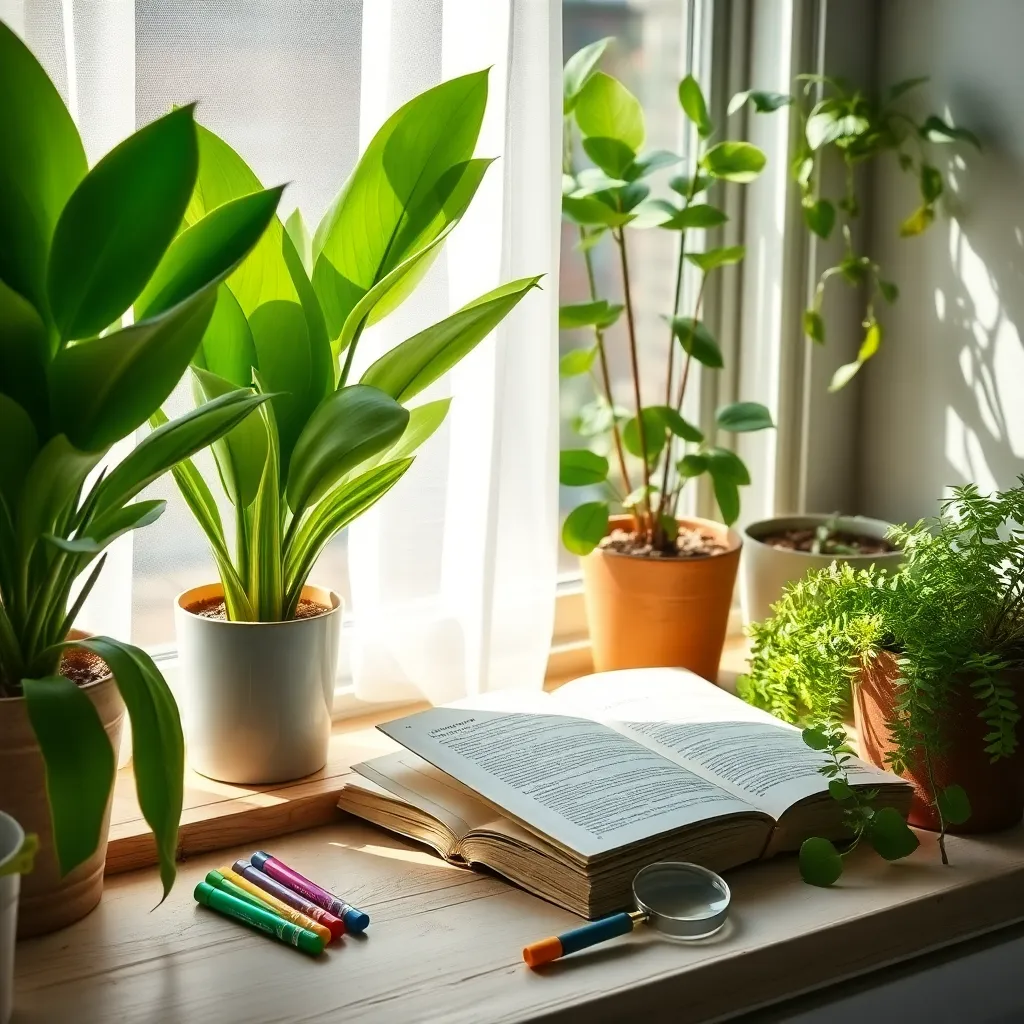
One common issue with air-purifying plants is yellowing leaves, often a sign of overwatering. To prevent this, ensure your plant pots have proper drainage and allow the top inch of soil to dry out before watering again.
Another frequent problem is brown tips on leaves, which can indicate low humidity levels. Increase humidity by misting the leaves regularly or placing a tray of water near the plant to naturally boost moisture in the air.
If your plants are not thriving, check for signs of pest infestations, such as sticky residue or small holes in the leaves. Regularly inspect your plants and use insecticidal soap or neem oil to treat any infestations quickly.
For those noticing stunted growth, insufficient light might be the culprit. Position your plants closer to a window where they can receive bright, indirect sunlight, or consider using grow lights to supplement natural light, especially during darker months.
Sometimes, plants may develop a leggy appearance, stretching towards a light source. Rotate your plants weekly to ensure even light distribution and prune back any overly long stems to encourage a more compact growth form.
If leaves are falling off unexpectedly, it could be due to temperature fluctuations. Keep your plants away from drafts, heaters, or vents, and maintain a steady room temperature between 65-75°F (18-24°C) for optimal growth.
Conclusion: Growing Success with These Plants
In conclusion, integrating air-purifying plants into your home offers more than just fresh air; it’s a nurturing step toward enhancing your relationships. We’ve explored five key concepts: how plants can improve communication by creating calming environments, the role of shared activities like gardening in strengthening bonds, the importance of environmental harmony in reducing stress, and how caring for plants can mirror nurturing relationships. Lastly, we touched on the emotional benefits of surrounding yourselves with nature’s beauty.
Your next step is simple: choose one plant from our list that resonates with you and introduce it into your home today. Whether it’s the resilient snake plant or the lush peace lily, let it be a symbol of your commitment to fostering a healthier, more connected living space.
Remember, relationships, like plants, thrive with attention and care. Bookmark this article as your go-to guide for cultivating both love and greenery in your life. As you nurture your surroundings, you’ll find that your relationships blossom in unexpected ways, paving the way for lasting success and happiness. Let this be the beginning of a journey toward a more harmonious, fulfilling relationship environment.
